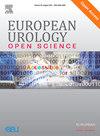Treatment with Autologous Adipose-derived Regenerative Cells for Peyronie’s Disease in Men: The Straight @head Pilot Study
IF 3.2
3区 医学
Q1 UROLOGY & NEPHROLOGY
引用次数: 0
Abstract
Background and objective
We evaluated the effectiveness of injecting autologous adipose-derived regenerative cells (ADRCs) into plaque in men with chronic Peyronie’s disease (PD).
Methods
This pilot safety study recruited 22 Danish men with chronic PD from an outpatient clinic. Patients received one bolus of ADRCs injected into plaque, with follow-ups at 1, 3, 6, and 12 mo. The primary endpoint was a reduction in penile curvature. Secondary endpoints were serious adverse events in relation to treatment, and patient-reported results for improvements, distress, and unhappiness related to PD.
Key findings and limitations
There was no significant difference in curvature after treatment. However, the participants reported subjective improvements, less distress, and a decrease in unhappiness. No severe adverse events were observed during 12-mo follow-up.
Conclusions and clinical implications
Injections of ADRCs into PD plaque appear to be safe but had no significant measurable effect on penile curvature. Half of the participants reported a subjective improvement.
Patient summary
We studied the safety and effectiveness of injections of patient-derived regenerative cells for chronic Peyronie’s disease. While the curvature of the penis did not significantly improve, the treatment was safe and some men reported a decrease in their distress and an improvement in penile shape.
求助全文
约1分钟内获得全文
求助全文
来源期刊

European Urology Open Science
UROLOGY & NEPHROLOGY-
CiteScore
3.40
自引率
4.00%
发文量
1183
审稿时长
49 days
 求助内容:
求助内容: 应助结果提醒方式:
应助结果提醒方式:


